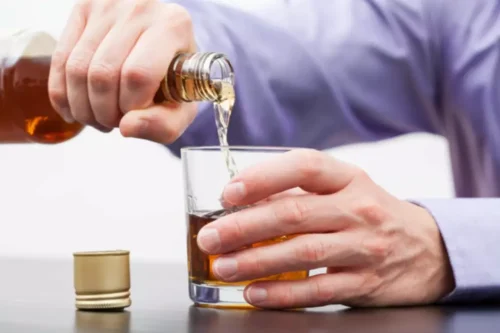
Alcohol abuse reduces the body’s ability to process vital nutrients and vitamins that the skin needs to remain healthy. Over time, this can lead to impurities in pores and can cause aggressive acne. When Alcoholics Anonymous your blood sugar levels spike, your body responds by producing insulin.
Eyes
Mandrekar’s research explores how these free radicals alter certain “chaperone” proteins and push the gas pedal on tumor growth. In short, alcohol affects almost every organ and tissue in the body, including the brain, heart, lungs, liver, stomach, and more. Connecting the dots between what scientists know and how we all understand the health impacts of what we ingest is not always a…straight path. So during a popular time to temporarily press pause on drinking, SELF reports on where the research on alcohol and health stands—and how our societal views on booze have been shifting.
Flushing
Alcohol induces vasodilation and facial flushing in people who have rosacea. However, alcohol is not the cause of the skin disease in most people. Most mocktails are made with similar high-sugar ingredients to regular cocktails. Of course, this means that in some ways, you’re still causing skin damage. If you want to try to counteract alcohol’s effect on your skin, then remember to stay hydrated.
- Although beer isn’t ideal for the skin, according to Dr Ana “Beer is filling, so the amount consumed tends to be limited and it has some antioxidant benefits.”
- If you’re enjoying this article, consider supporting our award-winning journalism by subscribing.
- She says that she has noticed a huge difference in her GI symptoms—diarrhea, bloating, and overall discomfort—since cutting out alcohol entirely (and simultaneously focusing on eating a more balanced diet).
- Porphyria cutanea tarda (PCT) is another indicator of liver disease and is most commonly caused by alcohol use disorder.
- “Any alcohol will negatively impact the quality, appearance and ageing of your skin,” explains Dr Ioannis Liakas, Medical Director at Vie Aesthetics.
How Intensive Outpatient Intensity Structure Helps Recovery
When you drink alcohol your blood vessels dilate, increasing blood flow near the skin’s surface, giving your face a red color or an alcoholic rash. Some people are more prone to facial flushing though because of a genetic mutation. These individuals can’t process alcohol effectively, which not only leads to alcohol skin rashes, but can also make them feel dizzy and cause palpitations, nausea, and vomiting from only small amounts of alcohol. This gene mutation is more common among people of Chinese, Japanese, and Korean descent. To prioritise skin health, it is essential to focus on a comprehensive approach. This includes maintaining a healthy diet, staying hydrated, practicing good sleep habits, and following a consistent skincare routine that includes sunscreen and moisturiser.

Similar to dark spirits, most white wines tend to have high sugar content. For your skin, that means inflammation and bloating, which isn’t a good look on anyone. Alcohol might make you drowsy and help you fall asleep faster, but you may not stay that way. It breaks up your normal sleep rhythms and can make you restless throughout the night. Cold compresses should help, but the best answer is a good night’s sleep. Antioxidants play an important role, Dr. Chang says, especially in removing free radicals and https://ecosoberhouse.com/ protecting skin from damage.

Visible Signs of Alcohol-Induced Skin Aging
- If that doesn’t sound appealing, there are plenty of non-alcoholic beers, wines and mixers available in most bars and supermarkets.
- Current alcoholic beverage labels in the US warn of the risks of driving under the influence of alcohol, adverse effects on general health, and risks for a developing fetus — but there’s no mention of cancer.
- Discover why the risk for substance abuse is higher in military kids and explore effective interventions.
- Unravel the complex link between substance abuse and mental illness, and explore effective treatment options.
- Antihistamines can be effective in reducing itching and inflammation caused by alcohol-induced rashes.
‘Alcoholic eyes’ is often used to describe the bloodshot eyes of heavy drinkers. Alcohol widens the blood vessels in the eyes, causing more blood to flow through them, increasing their appearance and volume. It can also cause yellowing of the sclera (whites) from jaundice caused by alcohol and liver complications. It can also affect outward appearance, ranging from minor skin abnormalities to potentially life-threatening conditions. Recovered spoke with plastic surgeon Dr. Bart Kachniarz to understand exactly how alcohol abuse affects appearance and what can be done to rectify it.
More people are “sober curious,” but the pressure to drink is still strong.
- Explore groundbreaking fentanyl vaccine research offering new hope in addiction treatment.
- However, alcohol is not the cause of the skin disease in most people.
- This is especially true if you have sensitive skin or a history of scarring.
- Discover the power of vaccinations for recovery, from COVID-19 to preventing disease outbreaks.
- If you’ve noticed changes in your skin related to alcohol consumption, chronic skin conditions, sun exposure, age, or any other concerns, the U.S.
- Like cocktails, the high sugar content in white wines can also lead to dull, sallow skin and puffiness – the last thing you want for your face.
For example, a 2018 study found that light drinkers (those consuming one to three drinks per week) had lower rates of cancer or death than those drinking less than one drink per week or none at all. And not so long ago there was general consensus that drinking in moderation also came with health advantages, including a reduced risk of cardiovascular disease and diabetes. Although the classic ‘drinker’s nose’ (rhinophyma) was thought to be related to excess alcohol consumption, it has never been proven. In a case-control study of 175 people with rosacea and 145 people with normal skin, there was no significant difference in alcohol consumption between the two groups. Chronic alcoholic liver disease may lead to reddening of palmar skin.
Here’s What Happens to Your Skin When You Drink Alcohol
“I’ve started finding other ways to capture that feeling.” These include drinking tea, going for evening walks, or deep breathing. Emma notes that ‘skin diseases such as certain types of eczema, psoriasis, rosacea and dermatitis are more common in heavy, longterm drinkers’, too. Going sober for a few weeks, or simply cutting back on your alcohol consumption, will give your skin the ability to regenerate. A booze-free month is a great way to allow skin to detox and re-hydrate and regenerate, skin will absorb vitamins and other nutrients more easily leading to less bloating and even potentially redness.

How Does Alcoholism Develop Over Time?
PLUS, the latest news on medical advances and breakthroughs from Harvard Medical School experts. In addition, swelling of the does drinking dry out your skin parotid gland may be a result of chronic alcohol use. Generalised skin itching (pruritus) may occur due to the build up of poorly metabolised substances that stimulate nerve endings in the skin. These substances may include bile salts, histamine, corticosteroids and opioids. If that doesn’t sound appealing, there are plenty of non-alcoholic beers, wines and mixers available in most bars and supermarkets.
How Do Opioids Impact Your Nervous System?
While excessive alcohol consumption is a risk factor for cancers that affect your mouth and digestive system, heavy drinking can also increase your risk for skin cancer. It’s not likely to come as a surprise that alcohol consumption, especially in excess, can be harmful to health. Many people are aware of the short-term effects of drinking on a person’s ability to function, and they may even know about the impact of alcohol on the heart, liver, and other organs.

